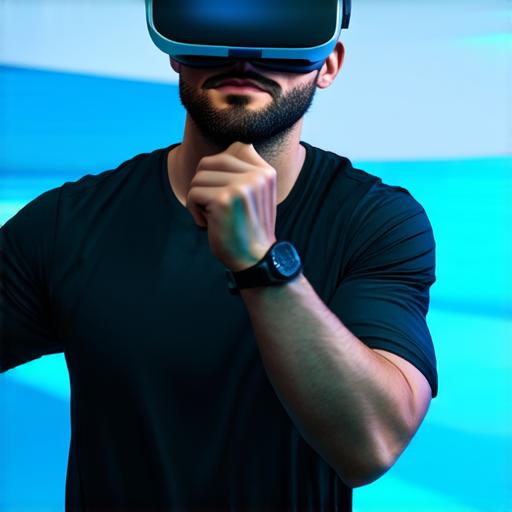
How do virtual reality headsets work?
Design and Components
Virtual reality headsets come in various designs, but the most common type is the closed-loop system, which consists of a head-mounted display (HMD) and sensors that track the user’s movement. The HMD, also known as the headset, sits on the user’s head and displays two screens, one for each eye. These screens are usually positioned slightly off-center to create a 3D effect that mimics the way our eyes perceive depth.
The sensors, which include cameras, accelerometers, and gyroscopes, track the user’s movement by detecting changes in head position and orientation. This data is used to adjust the images displayed on the screens, creating a seamless and immersive experience for the user. Some high-end VR headsets also feature additional sensors, such as time-of-flight (ToF) sensors, which allow for more accurate tracking of hand movements.
Display Technology
The display technology used in virtual reality headsets varies depending on the device’s capabilities and price point. The two most common display technologies are liquid crystal displays (LCD) and organic light-emitting diodes (OLED). LCD displays are less expensive but offer lower resolution and higher refresh rates, while OLED displays provide higher resolutions and lower refresh rates.
Some high-end VR headsets also use display technologies such as 3D light field displays, which create a more realistic and immersive experience by simulating the way light behaves in a real-world environment. These displays are still in the early stages of development, but they have the potential to revolutionize the way we experience virtual reality.
Content Creation and Development
Virtual reality content creation and development require specialized skills and knowledge, including 3D modeling, animation, and programming. Developers must create interactive experiences that take advantage of the unique capabilities of VR headsets, such as hand tracking, room-scale environments, and spatial audio.
Content creators also need to consider the user experience (UX) when designing virtual reality applications, ensuring that they are intuitive, easy to navigate, and provide a sense of presence and immersion. This requires a deep understanding of human psychology and behavior, as well as an ability to translate these concepts into a digital medium.
Limitations and Challenges
Virtual reality headsets are not without their limitations and challenges. One major limitation is the high cost of entry-level devices, which can be prohibitive for many consumers and developers. Additionally, some users may experience motion sickness or discomfort when using VR headsets, particularly if they have a history of motion sickness or are sensitive to certain stimuli.
Another challenge facing virtual reality technology is the need for high-performance computing hardware, which can be expensive and require significant power consumption. This limits the accessibility of VR experiences to users with less powerful systems, as well as increasing the environmental impact of VR applications.
Finally, there are ongoing challenges related to content creation and distribution, particularly in terms of ensuring that virtual reality experiences are accessible and engaging to a diverse range of users. Developers must also consider the ethical implications of creating and distributing immersive experiences that can have significant impacts on users’ mental and emotional well-being.
Future Development
Virtual reality technology is constantly evolving, with new developments and innovations emerging all the time. Some potential areas for future development include improvements in display technology, such as higher resolution and refresh rates, as well as advancements in haptic feedback that allow users to feel more immersed in virtual environments.

There are also ongoing efforts to improve the accessibility of VR technology, including the development of low-cost devices and more user-friendly interfaces. Additionally, there is a growing interest in using VR for educational and therapeutic purposes, with researchers exploring its potential as a tool for training healthcare professionals and treating mental health disorders.
Conclusion
Virtual reality headsets are an exciting and rapidly evolving technology that has the potential to revolutionize the way we interact with digital environments.


